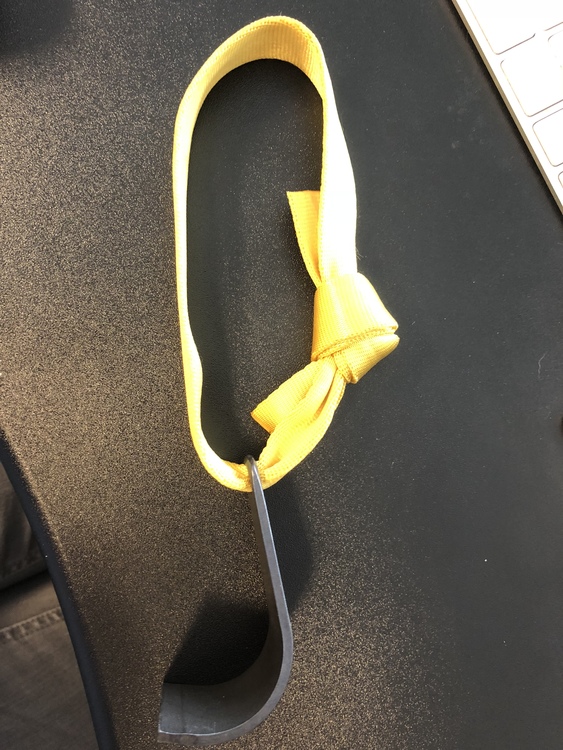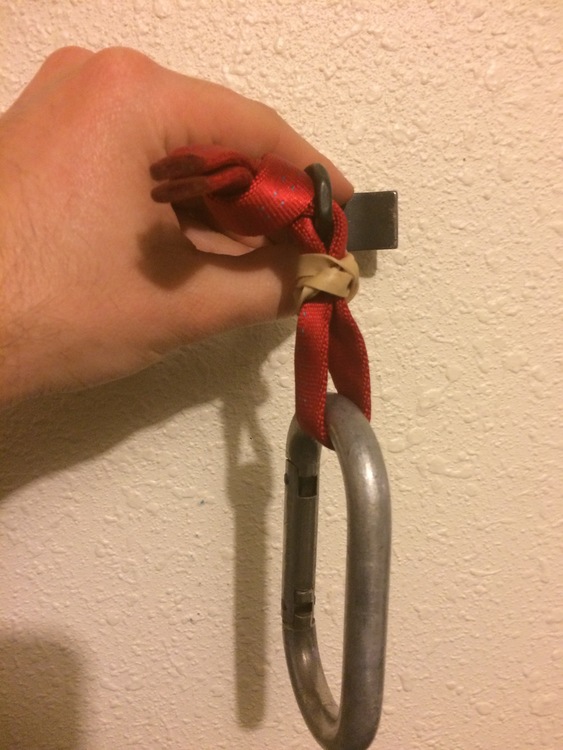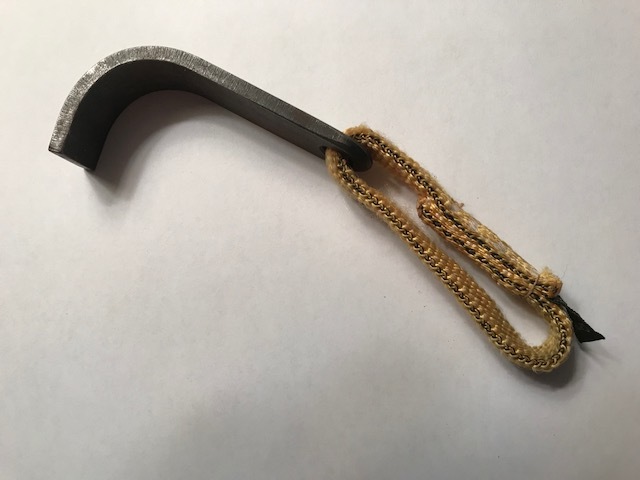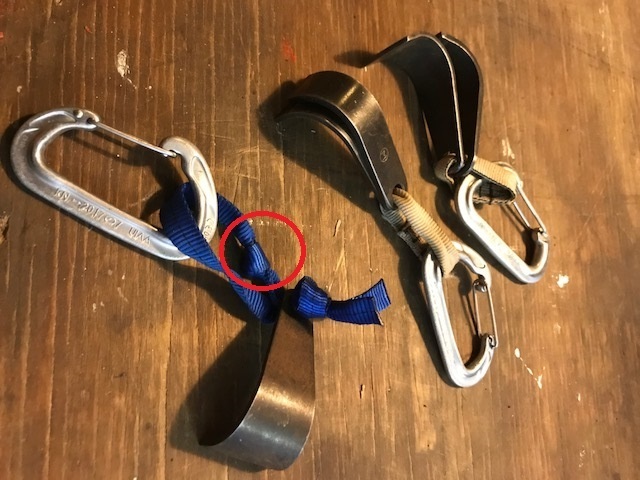Cam hooks and Webbing
|
|
Just curious what people find as the best way to tie webbing to a cam hook. I've seen it single threaded with a water knot (see pic 1) double threaded with an overhand (see pic 2) and I messed around with single threading with an overhand (see pic 3) Single thread water know with thicker webbing, not clean (Pic 4) I noticed that pic 3 seems to be a little cleaner than pic 1 (at least for the diameter of webbing I have). A lot of pictures show people using the set up from pic 2 which looks clean but I was just wondering if there's advantages or disadvantages to having it tied in a certain way. Maybe I'm not understanding why you would thread both ends through the cam hook and tie an over hand verse thread one and tie the other ends together with an overhand? (Pic 1) (Pic 2) (Pic 3) (Pic 4) |
|
|
I was told that the overhand knot set up (pic 2) is better in that a downward load presses the bottom of the hook into the wall resulting in a more secure placement. |
|
|
Pic 2 is how I place the webbing on all my hooks. In my experience its nice because it will never be between the rock and hook. |
|
|
Marty C wrote: I would guess that the torque would instead twist the top of the hook inward, not the bottom. But I've never used one. |
|
|
Pic2 is way to go- you need as slim as possible profile directly under the camhook. Pic2 method always keeps knot out of way. I switched to using cut old mammut 8mm dyneema slings for slinging a camhook, it seems to last longer than standard nylong webbing |
|
|
Thanks for the responses everyone. |
|
|
mpech wrote: Isn't pic 4 half as many layers of webbing directly under the cam hook? |
|
|
All my hooks are like setup 2, which is nice because of the things mentioned above, but also because you can tie them shorter to get higher on your pieces. |
|
|
By the way that baby camhook is sweet! where did you get it? |
|
|
Hooks, as in sky and grappling, get tied like pic 2. This puts the force in and down without placing the knot between the hook and the wall. Cam hooks get tied like pic 4. I would choose a water knot before an overhand. This places as little material between the hook and the wall. Also, threading the webbing through in one pass allows the force to pull straight down without leveraging the hook in or out. |
|
|
r m wrote: Yes why do you ask? If it fails it will be at the knot. The webbing will not snap. Layers/redundancy Isn't the issue here. |
|
|
BrokenChairs BrettC wrote: I was disputing this rational: "Pic2 is way to go- you need as slim as possible profile directly under the camhook.". Pic 4 is how my cam hooks are tied, with 10kN webbing. Open to changing but the why has to make sense to me. |
|
|
My 2 cents , I hope this clarifies my train of thought a bit more. Also, I never developed fine motor skills, please fight through the poor penmanship. |
|
|
I have always used #2 with thinner webbing. |
|
|
I agree that Pic 2 is the way to go for sky hooks, talons, & the like. But I don't see how it's best for cam hooks. The rubber band is ugly and dumb, I just used it because it's what I had on hand. I'd probably go with a hair tie or something for real. Eh? Edit: words |
|
|
Do you all use 1 inch tubular webbing for a BD Talon or something thinner? It's really tight getting two strands of 1 inch through the hole. |
|
|
OP in pic 2, looks like 15mm/10kN webbing like this: |
|
|
|
|
|
When I tie cam hooks I use the method shown in your #2 photo, with the addition of an overhand knot as shown in the red circle. That overhand knot only serves as a keeper so the hook cant slip off the webbing.
My preferred method for cam hooks is to sew two of them nested together on one loop. Slightly off topic, quite a few people use the euro death knot (as illustrated in #2 photo) to tie hooks other than the cam hook, in my experience no matter how hard I "set" that knot it still creeps from continual load - unload cycles and at the most inopportune time (most likely while you are run way the heck out on those hooks) you'll find the tails of the webbing creeping into the knot. I switched to using a water knot as the union for all my other tied hooks and have experienced much less creep since making that change. |

 Continue with onX Maps
Continue with onX Maps Continue with Facebook
Continue with Facebook





























